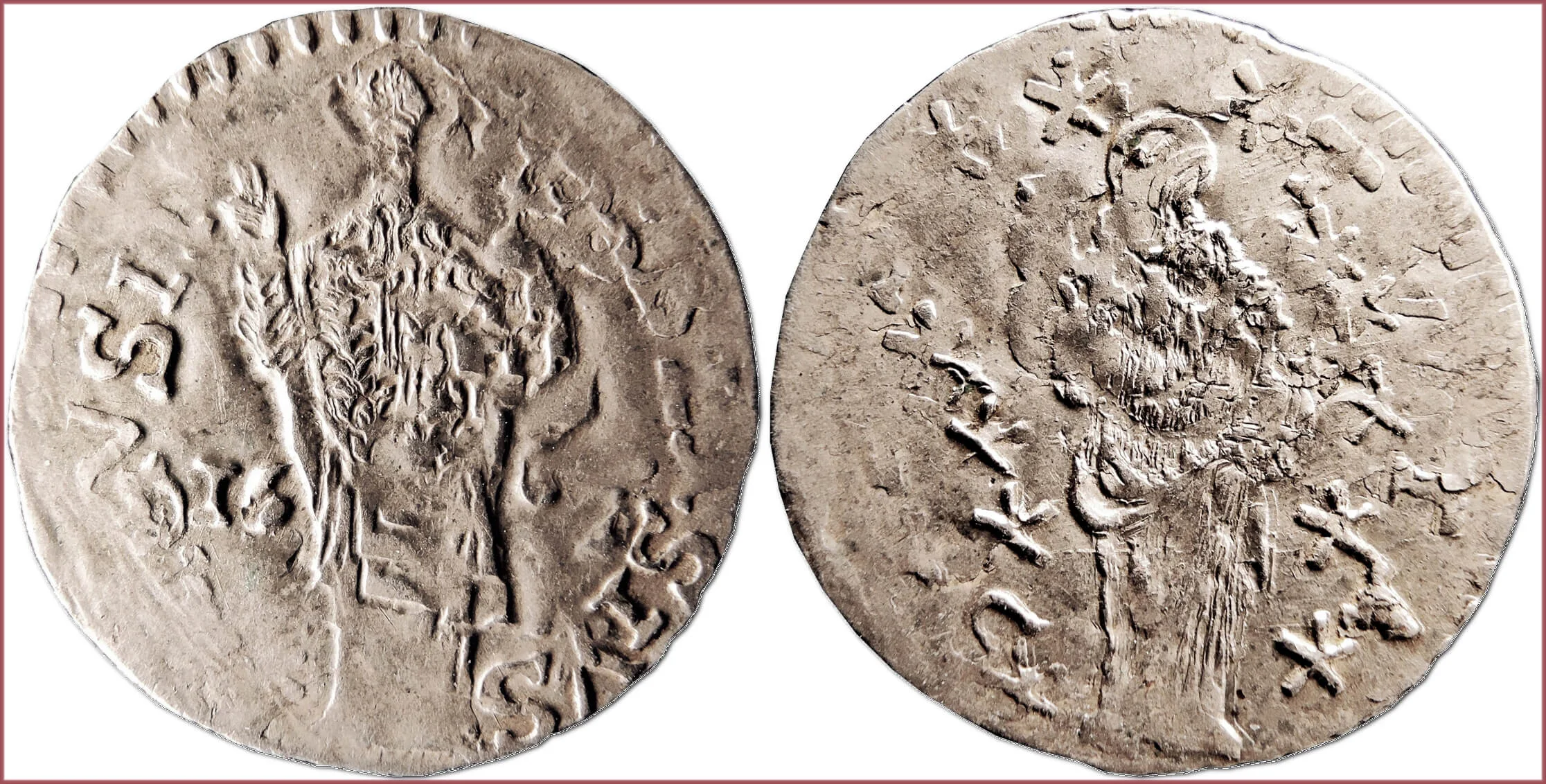GROSSETTO: COIN OF RAGUSA
Grossetto, 1667: Republic of Ragusa
Republic of Ragusa — aristocratic maritime republic (1358-1808) in South Dalmatia centered on the city of Ragusa. Nowadays it is Croatian city of Dubrovnik.
For a long time, Ragusa was under the control of the Republic of Venice. Therefore, the influence of Italian culture is more than noticeable. Also the monetary system (and coin names) was borrowed from Italy.
The governance structure of the Republic ensured the impossibility of power concentration in one hand, which is why the Ragusa Republic is sometimes called the first democratic state in Europe. Its motto was "Non bene pro toto libertas venditur auro", a Latin phrase which means "Liberty is not sold for all the gold in the world".
S BLASIVS RAGVSII: Saint Blaise of Ragusa (the patron saint of the city of Dubrovnik; the old Latin name of the city is RAGUSA).
Saint Blaise (Blaise of Sebaste) standing with hand raised in benediction — physician and bishop of Sebastea in historical Armenia (modern Sivas, Turkey) who is venerated as a Christian saint and martyr.
SALVS TVTA: Protector, Saviour.
Jesus Christ surrounded by stars.
In Croatia, this coin is known as dinarić.
- Silver: 17 mm - 0.53 g
- Reference price: 12$
COIN GROSSETTO — WHERE & WHEN (coins catalog: by names & emitents)
- ITALIAN STATES (14th-18th centuries) — Arezzo, Republic of Bologna, Duchy of Ferrara, Florence, Duchy of Mantua, Duchy of Savoy, Republic of Venice...: grossetto = 1/40 scudo
- REPUBLIC OF RAGUSA (17th-19th centuries): grossetto = 1/60 tallero
GROSSETTO (plural: grossetti) as coin name.
Grossetto or sometimes grosseto/grosetto — historical Italian small silver coin. There is evidence that half of the grosso was called that.
The oldest coin with the mentioned denomination, about which it was possible to find information, turned out to be a grossetto of Florence of the 14th century. Also is known the same Venetian coin of the 15th-16th centuries — the so-called "grossetto per navigar" of Doge Agostino Barbarigo for trade with the Levant.
However, despite its undeniable Italian roots, the grossetto is perhaps best known as a silver coin of the 17th-19th centuries of the Republic of Ragusa (Dubrovnik, modern Croatia). For the sake of fairness, it should be noted that this land was historically closely connected with Italy.
What was the grossetto of Ragusa? — First, it is worth noting: several denominations were minted: ½ (copper), 1, 3 and 6 grossetti (silver). Second, the grossetto was 1/60th of the Ragusa tallero. Thirdly, the 3-grossetti coin had its own name — alltilucho, and its design clearly resembled the Polish trojak.
The most common is the denomination of 1 grossetto of Ragusa 1626-1761. Most often, collections contain specimens in extremely poor condition (often this is the result of poor quality / insufficient minting; the result is that such coins are often mistaken for cast).
The coin name grossetto is probably a diminutive form of grosso. That is, from the point of view of etymology, grossetto is a small grosso.

